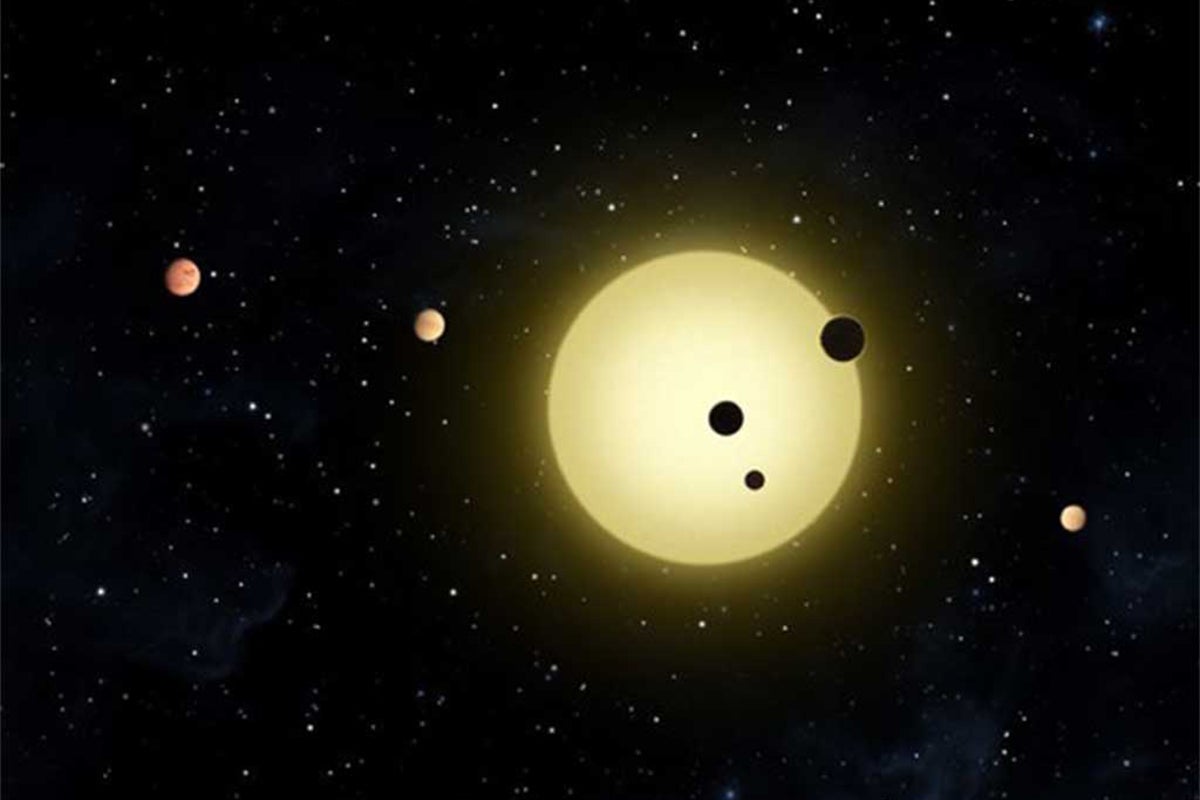Michael Himes is a fourth year doctoral candidate studying planets lightyears away (also called exoplanets) by using machine learning to better understand their atmospheres. This type of research could have big impacts on the future of understanding what is out in the universe, potentially including the remote detection of life.
Himes began harnessing the capabilities of machine learning at the beginning of his physics doctotal program while researching exoplanets and their atmospheres. Machine learning, a branch of artificial intelligence, enhances this kind of research as it can be used to clarify what is known about the exoplanet much faster than traditional methods. First the machine learning model must learn about exoplanets. To accomplish this, Himes inputs millions of data points about known exoplanet atmospheres including varying temperatures and compositions. By doing so he is teaching the computer model what different planetary atmospheres look like when observed from Earth.
“Humans use physics to learn about data. Machine learning models use data to learn about physics,” says Himes.
He presented his research during the Student Scholar Symposium during this year’s virtual Student Research Week, March 29-April 2. The virtual awards ceremony is today and all are welcomed to attend.
Given the distance of the planets Himes is studying, current space-based telescopes only provide low-quality images. But by applying what is known about planetary atmospheres to the image, so-called ‘retrieval’ algorithms can pick up on its features and make sense of what Himes and his team are seeing.
This technique comes with its limits: it can take several days to retrieve the atmospheric properties of one exoplanet. If the model was too simple or complex to accurately match the data, it would take another few days to run another retrieval using a better model. Himes began to explore ways he could improve the rate at which the retrieval was happening in Physics Professor Joseph Harrington’s lab, but it was during a NASA summer program that he and his team struck gold.
“What would previously take days now takes just minutes using machine learning,” Himes says.

Himes is continuing his research in understanding far off planets and increasing the speed with which machine learning can assist him in this process. He says he believes this type of research could take us a step closer to discovering life on other planets.
“Where this machine learning technique shines is looking forward to the next generation, where new telescopes like James Webb exists,” he says. “Machine learning retrieval techniques can help identify exoplanets that should be studied in more detail. Who knows what exciting things we will find?”
Himes will continue pursuing this research and aims to continue his career conducting research at the NASA Goddard Space Flight Center.




